The four volumes of Gli abiti de veneziani by Giovanni Grevembroch each have a special illustration on the cover page.
The first is quite elaborate, full of symbols related to Venice, the Gradenigo family and painting, and the last — for the unplanned fourth volume — is rather intriguing.
Volume I
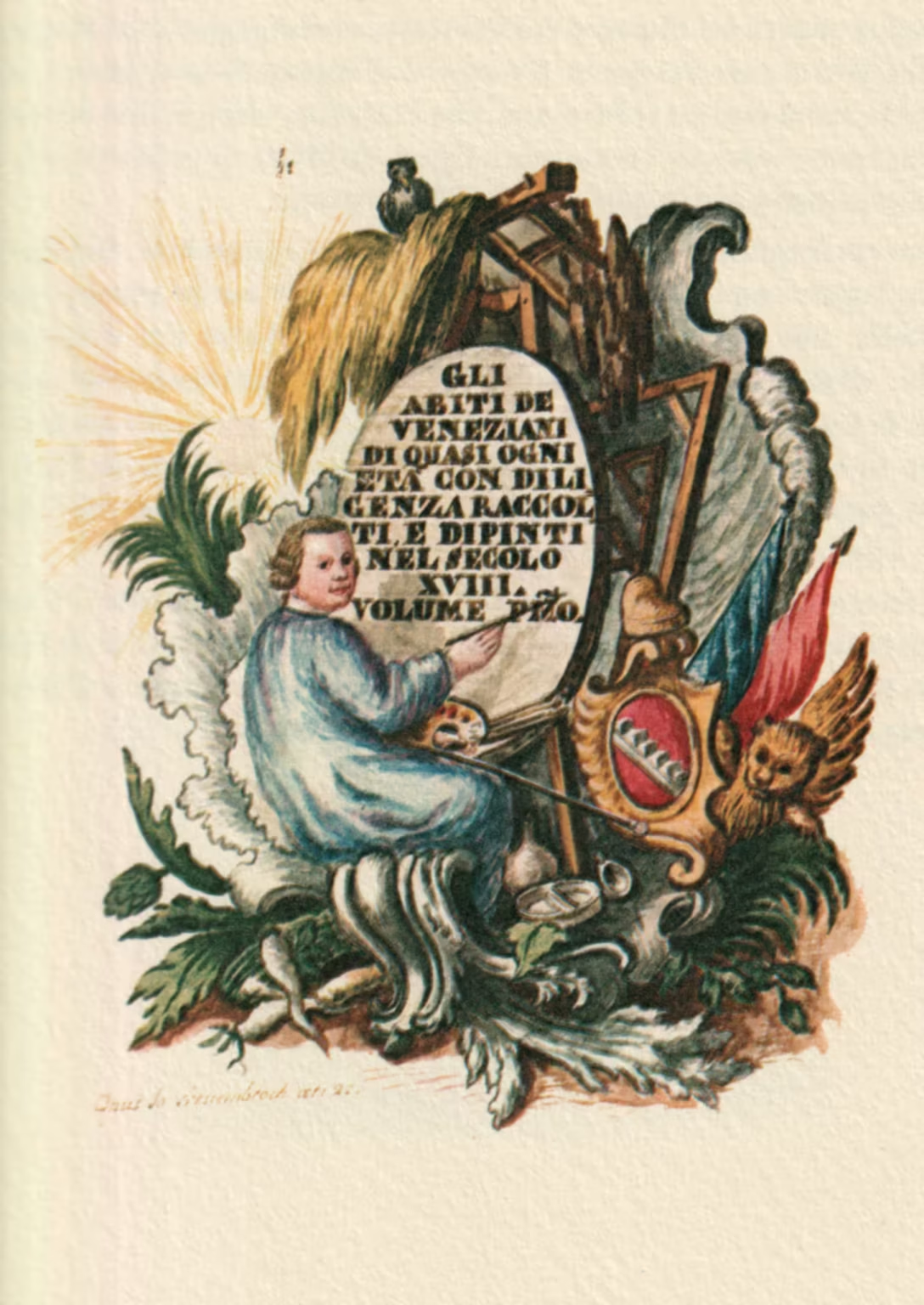
The cover of the first volume depicts a 23-year-old Grevembroch sitting at his easel, paint brush in hand, while he’s painting the title of the volume on an oval table.
Grevembroch is wearing a long coat or shirt, to protect his clothes from dirt and stains while working with paint and colours.
Numerous objects of various kind surround Grevembroch and the title of the work.
To the right we have his patron, Pietro Gradenigo. The coat of arms of the Gradenigo family is depicted on an elaborate shield surmounted by the corno ducale, as the Gradenigo was a ducal family, having had three doges earlier.
The Serenissima Republic of Venice is represented by the winged lion and two flags.
Below Grevembroch is an abundance of food. There’s an artichoke, some root vegetables, numerous leaves, and at his feet a plate, a cup and a flask.
Behind the easel, something that looks like a ruined shack with a straw roof. Underneath this, two compasses for measuring distances, probably some of the tools of the trade.
In the upper left, palm leaves and the rays of the sun, symbols of Christian salvation, flanked by a raven on top of the roof of the shack.
The raven can mean many contradictory things, such as divine protection, death, or as a symbol of being a sinner.
Volume II
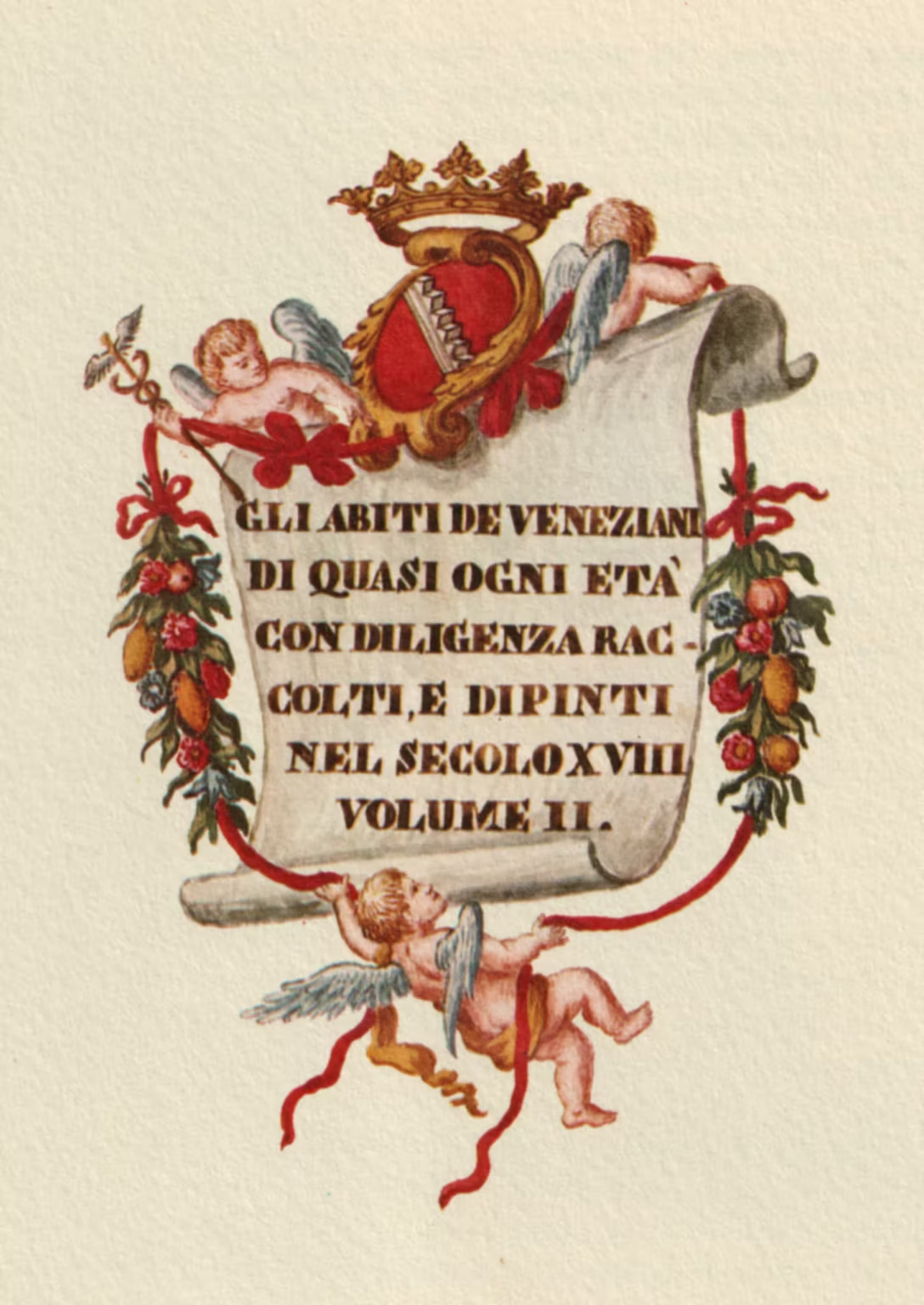
The second volume has a simple image.
A piece of paper or parchment, with the title of the volume, artfully curled at the top and bottom, with three putties adorning it with garlands of flowers, fruit and ribbons.
At the top, the coat of arms of the Gradenigo, surmounted by a crown to emphasise the high status of the family.
The staff in the hands of the putty in the upper-left corner, is the caduceus — the staff of the Greek god Hermes, and the Roman god Mercury.
Volume III
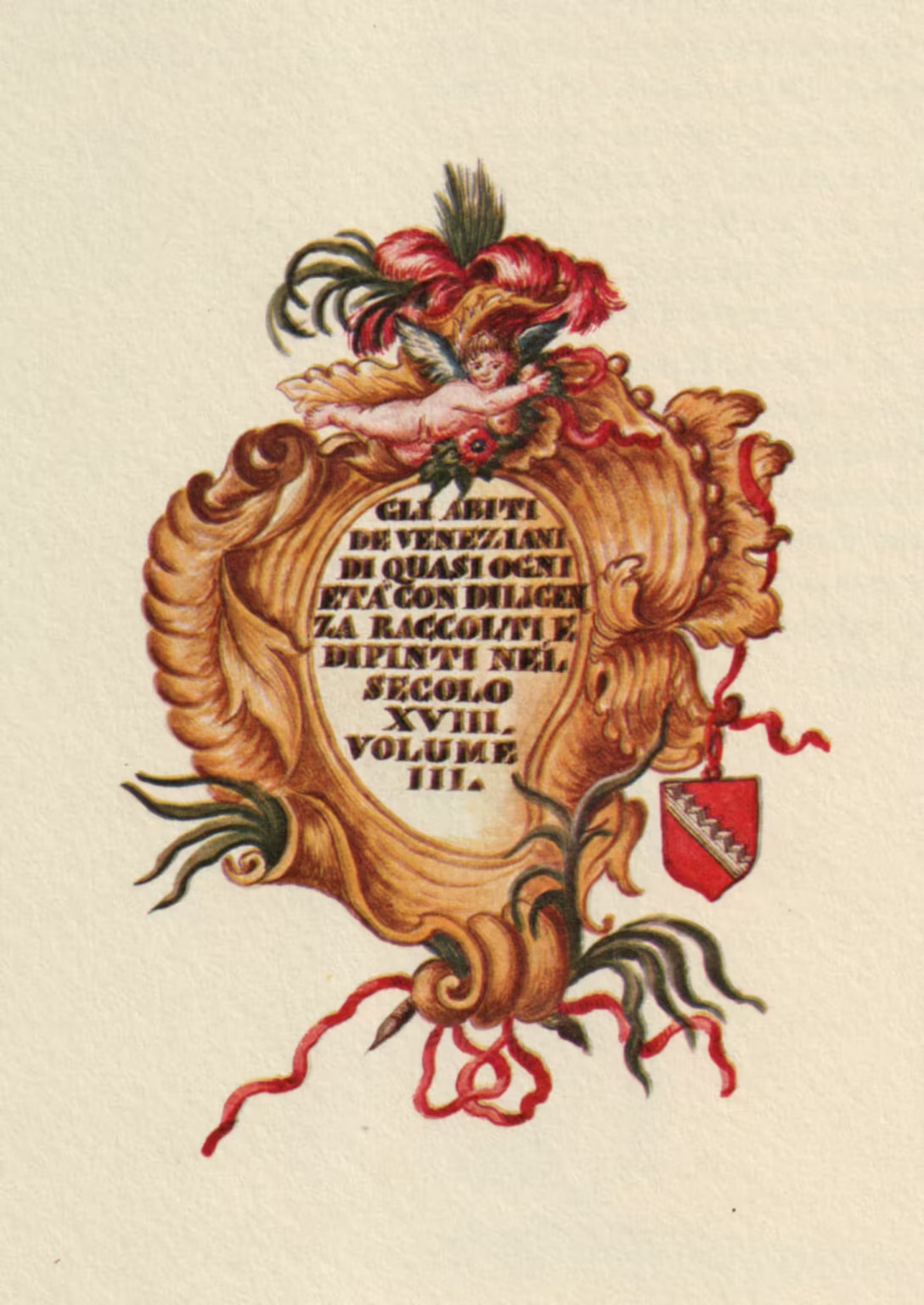
The title is at the centre of a very elaborate golden shield, adorned with volutes and ribbons.
At the top, a putty hold the ribbon, which down on the right side ends with coat of arms of the Gradenigo.
Well hidden behind the lower volute of the shield, are a pen and a brush, crossed, so only the tips are visible.
Volume IV
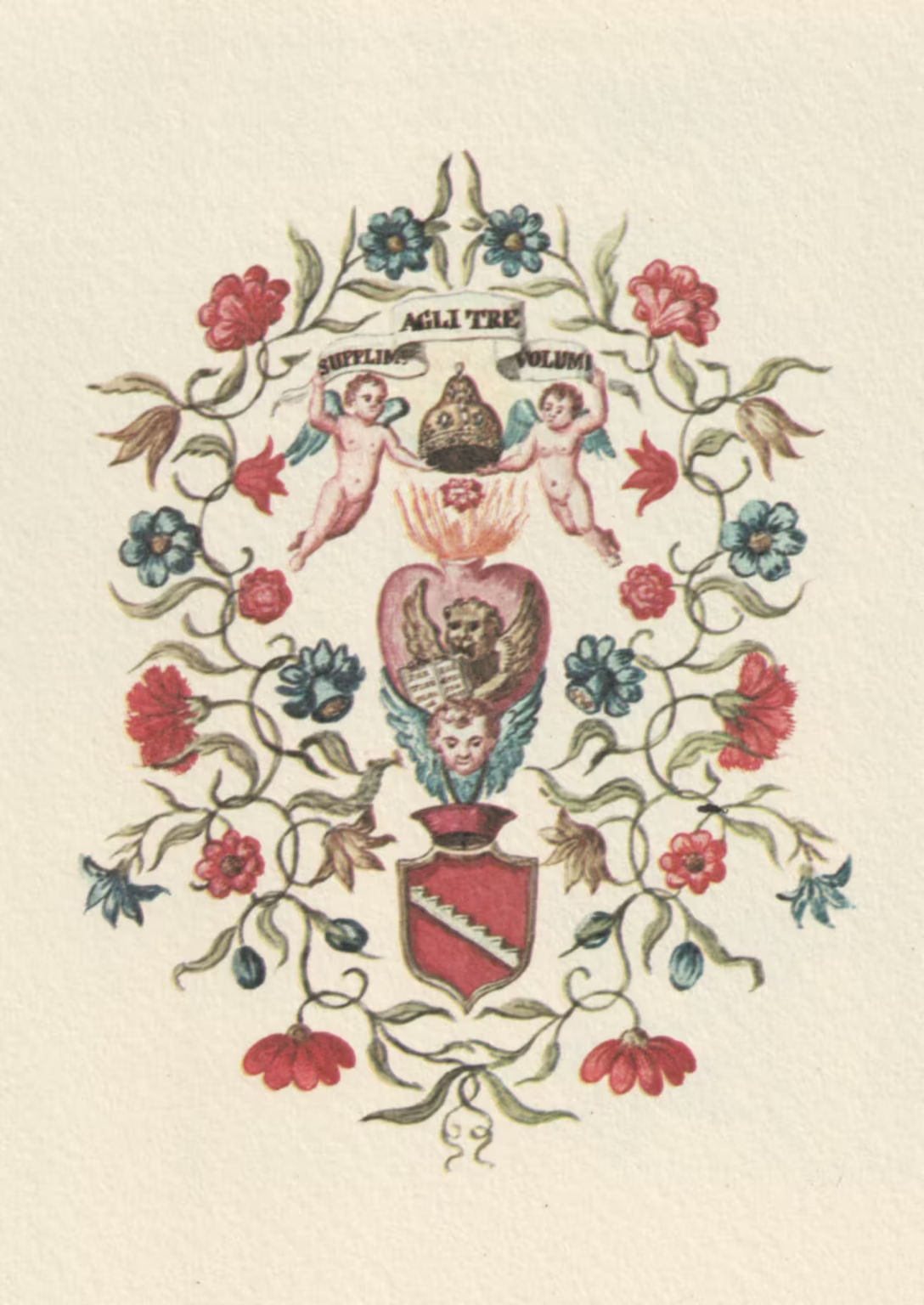
The fourth volume wasn’t planned, and it has a different title. It is a “Supplement to the three volumes.”
The edge of the elliptic design is a floral pattern, of red and blue flowers, with stems, leaves and buds, in an almost perfectly symmetric pattern.
The symmetry in something, like wild flowers, which are inherently asymmetric, probably means that everything depicted is symbolic, rather than realistic.
In the centre column, at the top, two putties hold between them a banner with the title, and a bejewelled corno ducale.
In the middle, is a slightly unorthodox version of the Most Sacred Heart of Jesus.
The heart has, as is usual, flames from the top, and a crown above. However, on the heart itself, instead of the crown of thorns and a bleeding wound, is a depiction of the winged lion of St Mark.
A Catholic symbol of Christ’s boundless love for mankind has become a symbol of … the artist’s boundless love of the Serenissima?
At the bottom, the coat of arms of the Gradenigo, topped by a hat, which Grevembroch himself (vol. 1, plate 14) indicated was worn in private by the doges. Therefore, another reference to the Gradenigo as a ducal family

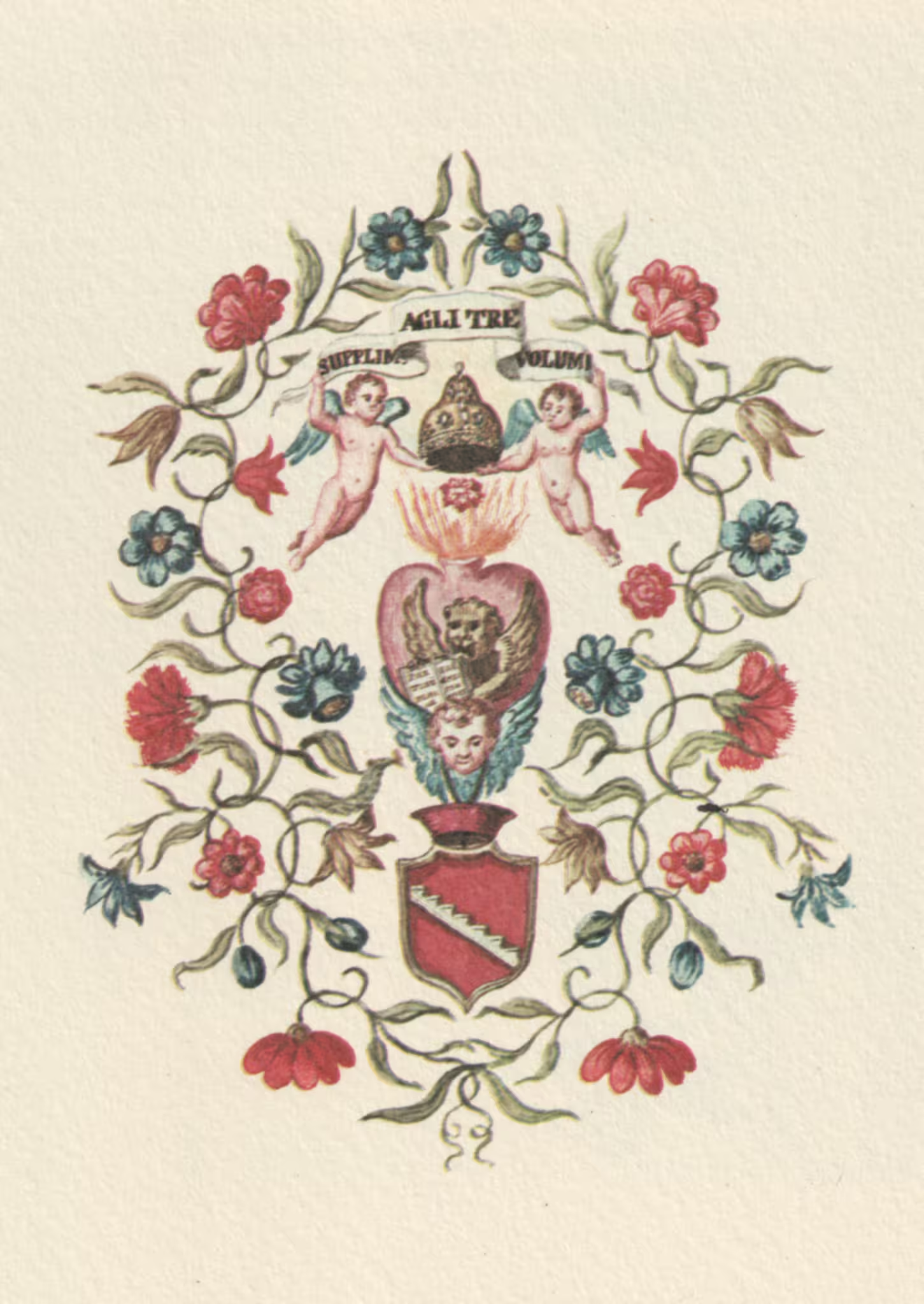
Leave a Reply